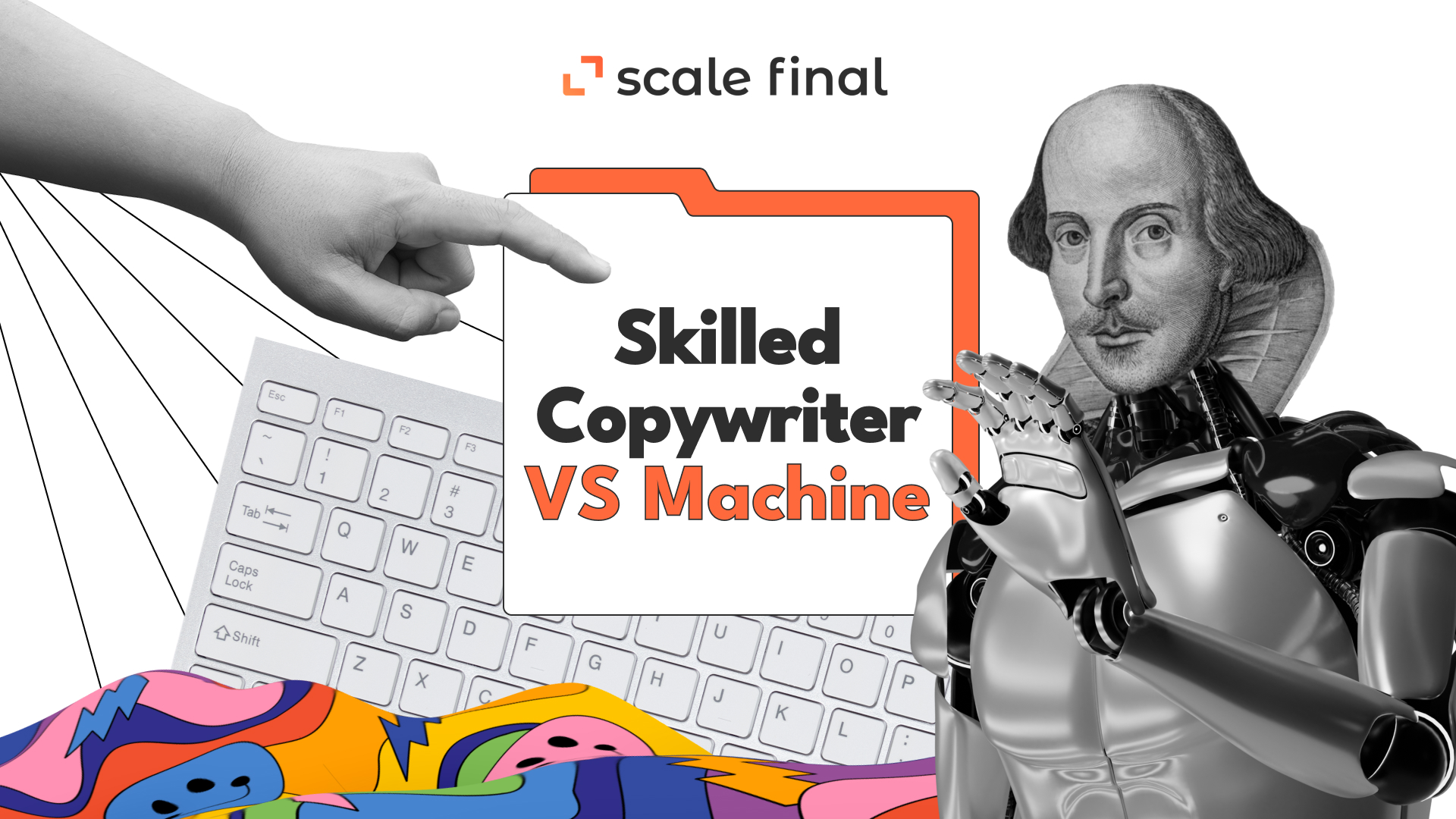Home • Content Marketing

Beyond blogs: how to create other content formats
October 11, 2023Content Marketing
Content marketing is one of the most promising tools to make your company known online. It is so promising because it helps: But for content marketing to work, you should first research your target audience. Consider their needs and current trends. Finding suitable content formats is the key, considering different purposes and communication channels. In this article, we’ll introduce you to some content formats and show you how to create them effectively. Video content Video content is not new, but it is still a relevant and sought-after content format. According to Cisco, video traffic will account for 82% of all Internet traffic by the end of 2023. Advantages of the video content: Types of video content you can use in marketing: To create quality video content, you need to: Audio content Audio content is a relatively new but rapidly growing content format. According to Insider Intelligence, the number of audio content users in the U.S. will reach 212 million by the end of 2023. Advantages of the audio content: Types of audio content you can use in marketing: To create high-quality audio content, you need to: Interactive content Interactive content is a content format that requires active user participation. Advantages of the interactive content: Types of interactive content you can use in marketing: To create quality interactive content, you need to: If this is your gem, you can easily create interactive content with our quiz marketing guide: Quiz your way to success: boost conversions with quiz marketing User-generated content User-generated content is a content format that brand users create. Advantages of the user-generated content: Types of user-generated content you can use in marketing: To create quality user-generated content, you need to: Here you’ll also find some tips on how to encourage UGC: User-Generated Content (UGC) and its impact on your business Conclusion For content marketing to be effective, choosing the format is critical. Videos grab attention, audio provides intimacy, interactive content ensures engagement, and user-generated content brings authenticity. You need to ask yourself who you are and evaluate your business. Maybe there’s a gap you can cover with the content marketing format. Use each of these content format strengths to connect with your audience in a meaningful way.

The future of content: AI revolution
May 25, 2023Content Marketing
Hi everyone. We talked about content strategies in a series of posts. We also once covered the topic of machive vs copywriter. We showed you just one angle on what’s happening now. Namely, the AI revolution. The biggest breakthrough since the creation of the Internet. I’m not going to tell you that you have to compete with robots. Rather, the point is that we content creators have already changed. Even the content you see now is no longer published in the traditional way. It wasn’t that the copywriter made a research, pitched an idea to the department head, the department head approved it, the copywriter wrote it, passed it on to the editor, and the SEO team started optimizing it. With the AI tools we’re using now, we can speed up the work. I’m not saying it makes the content better. It just makes the workflow faster. So what we call embracing AI lies in the plane of speed. As our CEO, Sviat Pinchuk, said in his personal blog, AI is just a technology. A technology that allows us to work faster. In a way, it’s better if KPIs are the only value for you. But we all know that’s not the case. We all want to keep doing something that truly benefits our customers. So there’s no talk of replacing the copywriter with a machine. Yes, our work has changed, but this is certainly not the first time that’s happened. No more panic, let’s look at how the content publishing workflow has changed with the AI revolution. Point 1 of content creation Research is the starting point for every content creation. We used to think about what users would google. We monitored social networks to find out what our customers/potential customers were talking about. We looked for ways to better solve their problems. This kind of work takes a lot of time. We take time to evaluate this information. It’s not just about satisfying the search engine robots, but more importantly about making our content visible and as useful as possible for our customers. After brainstorming, we would organize their ideas into tables and add 2-3 sentences to describe the idea. At Scale Final, for example, we use Miro at this stage to create an interactive visualization map. It takes time. Then, finally, we write this text. On average, one or two days? We don’t want it to be dull content. Why it’s important to write content with real value: What makes a good copywriter? We write, edit, edit again. Send it to the editor. Get the final version. Now it’s the SEO team’s turn to optimize the text. Does this sound familiar? I’m sure it’s similar in your team. How much time does it take to create good content? Quite a lot. Times have changed with the mass adoption of AI. And you’ve probably noticed how it reduces the time you have to work. Point 2 of content creation Everything starts in order – with research. We don’t have to guess to find the right keywords. There are many free apps that can help you determine the keywords. For example, Semrush. Now you can do it in minutes. With social network analysis, it’s the same. Each network has its own AI analytics system. You can see what topics come up most often in your customers’ circles. Next, you can use generative AI, such as ChatGPT. You create a prompt by entering keywords and topics from your research. You can also ask them to create a few variations of the title for you. You can also create a draft text. Play with the tone of voice and make as many changes as you want. You gather all the data, arrange it in front of your eyes, and then the fun part begins. Why this process makes no sense without you. You’re the one who evaluates the result. You’re the one who is responsible for making the text human and readable. You’re the most important link that checks if all the facts in the text are true. If your main goal is to create high-quality content and if it’s important to you that it’s useful for your readers, we have good news for you: You’re indispensable. Besides publishing, you also have the task of distributing it. You have to see if everything went according to plan. Most importantly, you need to learn from your work and from your mistakes. Even if with the help of Aritificial Intelligence. The AI revolution has already happened, and the tools will change and get better. We mustn’t forget that they’ll get better with our help. And also why we’re doing all this in the first place.

How to write content that sells. Part 4
May 23, 2023Content Marketing
All the content strategies we’ve talked about before are designed to create one-time interest. This means that your customers will no longer be interested in you if you fulfill their needs. But, it’s just the opposite if you offer a product that your target audience considers their specialty or hobby. In such cases, your community content strategy should be: This community content strategy can be called “useful,” which we critiqued in How to write content that sells: Part 1 But in this particular case, it’s spot on. Because if your product is a person’s hobby, it makes sense to read your content over and over again. What are the community content strategy formats? 1. Useful and entertaining social media posts The most convenient way to stay in touch with your customer is to sign them up to your social networks and post interesting content on your topic. It’s important to integrate the product into the content: You can talk about the product directly, you can talk about the product natively, you can do both. The main thing is that subscribers understand that this isn’t just a source of fun. But of your particular company with your product. Social media posts are also a tool for expert content strategy. Learn the difference: How to write content that sells: Part 2. 2. Blog articles They serve as a knowledge base for experts. Readers will come to the blog via search and/or advertising, and you need to make sure that they’ll come back for more: 3. Email newsletters If spam emails from any online stores are annoying, newsletters about your field/hobby are read with pleasure. Like with social media posts, useful content should be mixed with the native and direct promotion of your product. More on how to create a cool newsletter: 5 Worst Tips To Lose A Client 4. Conversation starters (AMAs, webinars, live sessions etc.) Some topics are better addressed with audiovisual content. If you choose right for your community content strategy, they’ll be hungry for more. This is also relevant for demand generation content strategy, which we covered in How to write content that sells: Part 3. Final thoughts on community content strategy 1. Creating insightful branded media on a broad topic isn’t a panacea in content marketing. Most of the time, it’s unnecessary. 2. If you have a clear product that the target audience is already looking for, you should use a product content strategy. Focus on demonstrating features and handling objections. 3. if credibility is important to customers, use an expert content strategy. Build a reputation as someone who’s been around forever. 4. If you have a new, unique or non-obvious product, define pain points and lead through them to the product. 5. If your product is for professionals, create a community of interest. Warm up your audience there, and sell to loyal subscribers. Don’t expect your audience to be so pleased with usefulness that they’ll search for what you’re selling. Place your offers proudly. In articles, posts, videos, webinars, and newsletters. No one is going to chop up great content if there are ads.

How to write content that sells. Part 3
May 18, 2023Content Marketing
Now we know exactly what content strategy looks like for well-known types. If the average customer isn’t yet familiar with your particular product, you need to show all the benefits and possible use cases. You need to plant a thought in the customer’s mind, “This product is a better fit for me” : How to create content that sells. Part 1 If the value of your product is intangible, you should use an expert content strategy. Customers don’t know if your product is worth their money, so it’s your job to build trust: How to create content that sells. Part 2 But what if your potential customers don’t know your product exists? That it’ll help them change jobs they haven’t liked for years, for example, and you’re selling online courses on how to become a nocoder. You have to create demand for your product first. So product-focused and expert content strategies aren’t for you. Follow these simple steps: What are demand generation content strategy formats? Articles, videos, webinars about your target audience’s key pain points Your potential customer doesn’t know your product yet, but already has problems that this product solves. So you approach them with content that promises to solve their pain, and then offer a solution in the form of a product. A good example of this is Clearscope‘s webinars, a content optimization tool for content and SEO teams. The webinars are free and educational. All the problems shown can be solved with the Clerascope tool. This is a win-win situation. Success Stories A format where we show the desired image achieved with your product. If our audience wants to have the same effect, they’ll want to know more about the tool that helps achieve it. Take Sendoso for example, an electronic and physical gifting platform to strengthen relationships between customers and employees. They even have their own blog titled ‘s header of the website. So if a potential customer reads some of smartly crafted stories in the sections, they’ll be more willing to become a Sendoso customer. Free courses, templates, ebooks You offer introductory products when it’s hard for your potential customer to decide on a new product right away. Once they try it for free, it’ll be easier. A good example is HubSpot, which has it all. HubSpot is a CRM platform with all the software, integrations and resources you need to connect marketing, sales, content management and customer service. It offers a number of free tools that most are eager to try. After your customer try it out and understand that it works, they will probably choose your product because it solved their problem. The next and final post in this series is about what to do if you need to maintain a sales funnel of regular users – content strategy “Creating a professional community.”

How to write content that sells. Part 2
May 16, 2023Content Marketing
In the previous series, we talked about a product-focused content strategy. In short, with it, you need to describe the features of the product as thoroughly as possible. Review the strategy and decide if it fits your product: How to write content that sells. Part 1 But what if the value of the product isn’t quite clear to the customer? There are products where, no matter how thoroughly studied, you can never be completely sure of the outcome. For example, a financial advisor can write all the right things on his website, saying that he carefully analyzes securities, has a lot of reliable insiders, and much more. But a potential client will still have doubts about whether the advisor knows what he’s writing about. With such products, you need to build trusted expertise in your field. This requires long and open sharing of useful materials. For example, investors write where they invest, marketers share promising advertising platforms. Strategy 2: Expertise This content marketing strategy usually means that the expert attracts a lot of non-targeted traffic. Usually, these are industry peers or an audience interested in the field but not in your specific product. The marketer is usually subscribed to by other marketers. The investor will be read by all sorts of freeloaders waiting for signals. But actually, this is all good. Non-targeted audiences create social capital. Potential clients see that an expert has the trust of thousands of people. That he is recommended by his subscribers to their acquaintances. Therefore, an expert needs to create content for both regular viewers and those who might become customers in the future. Here’s what it might look like. What are the expert content strategy formats? Social media expert posts Sharing observations and conclusions, analyzing the market situation, and showing the results of your work with comments and explanations of why the results turned out the way they did. Unsuccessful results with reflection also go. Tip: narrow down the topic of your blog to one that you’re really good at. You will have a clearer positioning, and potential customers will be able to reach you much easier when they have inquiries. Webinars Expertise is closely linked to familiarity. Someone who isn’t afraid to publicly take responsibility for the outcome is always trusted more. Besides, the audience is drawn to charismatic people, and a live performance is the best way to show off your charisma. Webinars should be conducted on both “evergreen” and “momentary” topics. Evergreen webinars can be repeated from time to time, or you can place a recording in the public domain, so that the professional audience can be added. Webinars on “momentary” topics help reach new audiences through hot infomercials. Media articles It’s a free way to reach a new audience. Because advice like “Run an expert LinkedIn channel” sounds great, until the question arises, “Where do we get readers?” You can spend money on advertising, or you can write media articles and get subscribers for free. Media articles aren’t only good for getting subscribers, but also for getting instant sales with existing customers. They read the article, understand that you understand the topic, and contact you to solve their problem. Here we can also mention guest posts, which you can read more about here: Guest Posts: A Win-win Marketing Tactic

How to write content that sells. Part 1
May 11, 2023Content Marketing
Does content marketing strictly consist of useful content? Planned articles that teach readers something and make their lives better? So that they start to like you for the usefulness and buy the product with shining eyes. Happy Ending. What is somehow forgotten is that such useful content isn’t the only way to do content marketing. It’s the most complicated, expensive and time-consuming way. And actually, not everyone needs it either. In this series of articles, we present four alternative content marketing strategies: what they are, how they persuade readers to buy, and for whom they’re suitable. We also give some examples of successful implementations of these strategies. This part is about Product-focused content strategy. What are the problems with the “useful” approach to content marketing? 1. Very broad topic. You work in B2B, which means you need to create content about the business: hiring people, optimizing processes, taxes and accounting, marketing and sales. Usually you start with this logic: “Our customer is an entrepreneur, they’re interested in all this, we have to give them this.” 2. Lots of teaching. Useful content should change the reader’s life for the better. They have a poorly performing sales department? You’re about to show one such article that your reader will use to boost the performance of their salespeople! The money will flow like a river, you promise. You’ll either not talk about the product and share case studies at all, or you’ll do it very rarely and carefully. It’s about selling; it’s not useful, it doesn’t fit your big altruistic goal. 3. Long warm-up. Useful content needs to retain readers, and that takes time. That’s why part of a “useful” strategy is that readers have to subscribe to you so they keep getting your content. They’ll warm up, and buy something after all. The result is usually sad: even if you manage to produce quality content on a regular basis, all that work doesn’t turn into leads and sales. The enthusiasm fades, the blog is abandoned. And it’s all because there’s no content-to-product connection. Articles show how to solve a problem, but they don’t show how the product helps solve that problem. It turns out to be charity, not marketing: you give a benefit, but you don’t get it in return. There is a solution. And by the way, it saves you money because you don’t have to create big brand media. Strategy 1: Product-focused This is a common content marketing strategy that simply highlights the product. Potential customers somehow found you. With the help of the content, they can study the product in detail and make a decision to buy. The main task of the product-focused content strategy is to make the product as clear as possible to the customer. Therefore, the cycle of working with the customer is short: you shouldn’t sign them up on social networks and warm them up for a long time, but instead give them all the necessary information to make a decision. This strategy is suitable for products whose benefits are clear to the customer. That is, they know what they want and that this particular product will help them solve problems. An example of such a product is technician repair services. Is it necessary to warm up to the average device owner? To sign them up for your social networks? Or to have a newsletter containing useful articles about repairs? No, you don’t need to. Most of the time, the owner doesn’t care about breakdowns and replacement parts. But when something happens to their device, they’ll be looking for service – and that’s where we need to pick them up with content marketing. Your goal is achieved through content about the product: what it’s made of, how it’s provided, what the limitations are, and whether it accurately solves the customer’s problem. You need to create a feeling in the potential customer: “Yes, this is exactly what I was looking for.” What are the product-focused content strategy formats? 1. Product blog posts These articles delve into the main branding. It’s impossible to answer all the questions and explain all the nuances on the site, so you move some of this information to articles. This is exactly what Dustless Blasting does. Their main focus is on the product, and all articles in the blog are about its features and how exactly it helps solve their customers’ problems. 2. Use cases These are articles about some scenarios of product use: you take a situation that potential customers encounter and show how it’s considered in your product. Miro publishes many use cases of its product via its blog. The reader thinks, “Yes, I do that too (or would like to do it) – and that’s how it’s implemented in this product. It works for me.” 3. Case studies This is a classic of content marketing, cases must be published with every content strategy. Yes, even without a content strategy they should be published. Because case studies are the proof that the product is good on paper, but also in practice. We at Scale Final post on a regular basis, too. Check out our case studies. 4. Answers to questions and objections It’s good if the content department works in connection with the sales department and technical support – then the content can answer the questions and objections that come most often from customers. After all, some customers ask these questions, and some just leave – content can help you keep them. Coinrule crypto trading bot has a special Knowledbase blog on the platform. This blog answers all their customers’ answers. In the next series we will talk about 3 other content strategies: Expert, Demand generation, and Community.

What makes a good copywriter?
April 28, 2023Content Marketing
Copywriting isn’t just about getting people to buy your products. Nor is it just about imparting knowledge. First of all, as with all writing, it’s about the text itself. It’s can be as powerful as if it were a book you want to share with your loved ones. There are some tips on how to craft content that will persuade your users. Or tips on how to optimize it so you rank better in the SERPs. What’s missing from all those tips is the text itself. The heart, in other words. Today we’re focusing on creating articles that will be shared and stand the test of time. Remember that there are tricks, but no amount of advertisement will boost content that doesn’t share real value. Write for your customer, not the algorithm In a blog post Skilled Copywriter VS Machine: Why Chat GPT Won’t Be Able to Replace True Professionals? we named things that generative AI lacks. Empathy, understanding consumer behavior, and the right tone of voice. But that doesn’t mean AI copywriter can’t exist. It’s just about creating a great prompt; you’ll end up with the text you wanted. You’ll spend some time on it, but once the prompt is done, you can use it infinitely. What’s the catch? The same as always. Thinking in terms of quantity instead of quality. Sure, you’ll make your profit, but it won’t last. The standout content is created by a thoughtful person. Ask yourself a question. Do you really want more over depth? It’s easy to get lost in the pursuit of profit and begin to perceive your customers, real people, as numbers, clicks, leads, etc. Set your goal straight It may be an unpopular opinion here. We aren’t robots. It’s good to publish long texts every day, but are you really able too? Meaningful writing takes time. Here, too, you can use AI. But think for yourself: Do you like reading posts with nothing underneath? If you try too hard, you’ll rush them. You don’t give them enough mental energy. And as a result is that no one needs your text because they can’t feel anything. You figure out how long you need to write something really great. Something you read and think, “Did I write that?” If you think that, you’ve achieved your goal. Sure, there are some exceptions, but that doesn’t mean you shouldn’t try this approach with them. Personalize your writing You should also have a clear goal and plan in mind. For your text to mean something, you need to understand what your readers will take away from it. Answer these three questions: These are selfless questions. And that’s what makes your text so special. This content will be well received and shared by your audience. The purpose of your text can be anything. You can be a copywriter at an agency, have your own brand, work in the entertainment industry, or be a blog writer. Building a loyal readership takes time. Put your readers first and create content that meets their needs, you’ll stand the test of time. That was the part about the heart of your text. The SEO optimization is its skeleton. You need to meet the requirements of search engine robots. There is no constraint. You can be truthful and customer-oriented while following the rules of the game. More tips on SEO content here: How to rank #1 in search results: a сomprehensive guide

Skilled copywriter vs. machine: Why Chat GPT won’t be able to replace true professionals?
February 15, 2023Content Marketing
Hear these sounds? It’s thousands of copywriters sweating and trying to figure out whether the new Chat GPT-3 will steal their job or not. If you listen carefully, you’ll even hear disturbing thoughts of business owners wondering whether to rely on automatically generated texts or not. We’ve been testing different AI tools, including Chat GPT, and can claim one thing: whether you’re a writer or just the one who hires them, your obligations don’t seem to be going away anytime soon. And here is why. Related: The future of content: AI revolution Emotion & empathy It’s hard to argue that ChatGPT is a powerful tool for generating written content. However, it’s not a replacement for human creativity and empathy. A solid piece of copywriting requires not only a deep understanding of the intended consumers but also an ability to craft messages that resonate with them. In terms of UX copywriting, Chat GPT is useless. It lacks the emotional intelligence and nuance that a human copywriter brings to the table (not to mention the usage of a storytelling approach, metaphors, play-on-words, and rhetorical devices). To create an engaging and persuasive message, headlines, CTA buttons, you need to understand the context of the message and tailor it accordingly. Understanding customers’ behavior That’s the feature Chat GPT cannot boast of. It can’t independently determine what to write for each stage of your customer’s buying cycle, identify the particular problems that a group of individuals has, or demonstrate how a newly developed product can solve them. Voice Is an AI-created text accurate and well-written? Yes. Is it perfectly written? No. It’s striking until you scrutinize the copy and see three sentences starting with “It is stated that…” in a row. But what’s most important, will it be able to substitute for a human voice? They say “never say never”, so we’d answer “not in this century”. The generated copy may be factually correct. But in this case, the golden rule of copywriting is broken – “when there’s no personality behind it, there is no connection with your customers”. So, do you still need best-in-class copywriters? Before sacking an entire in-house copywriting team in favor of getting a robot to write your content, bear in mind just one limitation. As long as your company’s goals rely on customers (who are human beings) and written communication to reach the target audience, copywriters will always be your salvation.



